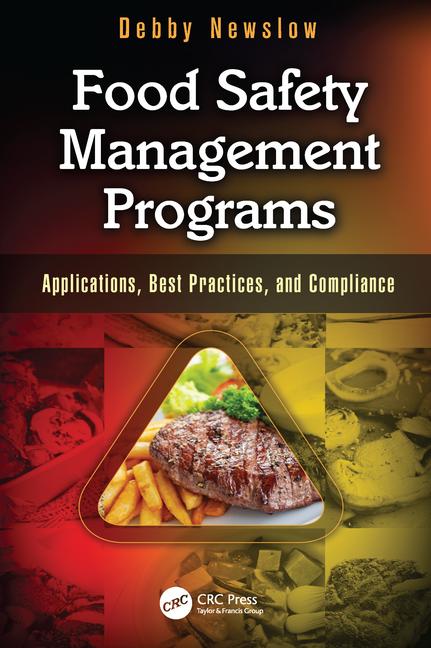Evolving Threats to the U.S. Poultry Industry

The food you produce is consumed by not only Americans but by customers around the world. Some of our adversaries don’t like that, since a nation with food is a nation that wields control over other nations. You should be aware of threats to the food industry so you can develop robust defense strategies for your facilities and products. A strong food defense plan better protects your employees, your brand, and your bottom line.
The Poultry Industry: An Important Component of the Nation’s Critical Infrastructure
Food and agriculture, as well as inputs to that industry—facilities, water and wastewater, chemicals, communications, the power grid, finances, information technology, and transportation—are all designated by the federal government as “critical infrastructures,” or elements of society that are essential to our well-being. The sector is protected at the federal level, as defined by two presidential policy directives that describe evolving threats. These directives assign the responsibility for protecting themselves to companies, but also provide for leveraging federal capabilities and resources if the poultry industry were successfully attacked.
If tensions rise, terrorist groups would be gunning for the larger U.S. food supply, of which the poultry industry is an important component. A coordinated attack on the U.S. poultry industry, however, would entail a huge effort, beyond the range of most terrorist organizations. Nation states, by contrast, are more capable and, therefore, more dangerous. The U.S. poultry industry would be a probable target for North Korea, possibly even for Russia and China. Given the capabilities exhibited by both North Korea and Russia, it would not be unreasonable to expect a sophisticated and coordinated attack on agriculture if, at some point in the future, the U.S. and its allies go to war with these nations.
Appropriate Corporate Responses
How should the poultry industry respond to a potential threat? Rigorous biosecurity and food defense programs go a long way toward making facilities, products, and processes secure from adversaries. Consider first protecting against the intentional introduction of “weapons of mass destruction,” which in this scenario would include chemical, biological, or radiological materials. Rigid personnel security and physical security programs serve as the first line of defense against these types of threats.
Rule number one in a personnel security program is to know who works for you and where they are at all times while on duty. This protects not only the business but also the employees themselves. If an emergency occurs, you will know where to find your personnel. You should also always know when and where “guests”—including maintenance workers—are on your premises.
Rule number two is to monitor premises and processes by using access control, process monitoring, and security camera systems. Generally, people not working at a poultry facility should not be allowed to enter poultry houses. Why? To prevent disease, of course. Exclusion through access control systems also prevents people from having access, which in turn prevents them from introducing dangerous agents. Non-company personnel who need to be on poultry farms for repair work, equipment maintenance, and pest control, for example, should be allowed access only under conditions described in the biosecurity protocol, and they should be escorted at all times.
Rule number three is to develop a security plan and apply it at all times. Shortcuts should never be allowed because they compromise the security system and increase corporate liability. Intentionally breaking security protocols might also be a violation of state and federal laws.
Rule number four is to report suspicious people or activities as soon as observed. The corporate environment for reporting has everything to do with achieving success. Employees have to be empowered and trained to report, as well as rewarded when they do report suspicious people and activities.
In a recent security audit of a poultry products corporation, I intentionally acted suspiciously by not first identifying myself, then going to a perimeter fence at the processing plant and taking photographs. Taking pictures of a facility should be viewed as highly suspicious. An employee of an affiliated trucking company saw me and reported it to the facility manager, who then had four management-level plant personnel approach me. They politely but firmly questioned me while maintaining a safe distance. The whole incident lasted about 3 minutes, which is truly remarkable and evidence of a successful security program.
Poultry facility security programs will have to evolve as new threats are identified and should be viewed as a corporate investment. They must be comprehensive, always considering the vulnerabilities of every facility process and outlining ways to harden defenses. An overlooked vulnerability or an unenforced security protocol is dangerous for both the corporate brand and the bottom line. Stay vigilant and stay safe.
Robert A. Norton, Ph.D., is chair of the Auburn University Food System Institute’s Food and Water Defense Working Group. He is a long-time consultant to the U.S. military and federal and state law enforcement agencies. He can be reached at nortora@auburn.edu or by phone at 334-844-7562.
DISCLAIMER: Support for Robert A. Norton, Ph.D., and the production of this article was provided by the Alabama Agricultural Experiment Station and the Hatch program of the National Institute of Food and Agriculture, U.S. Department of Agriculture. The article represents the personal opinion of Robert A. Norton, Ph.D., and does not reflect official policy or statutory-related opinion of the federal government, National Institute of Food and Agriculture, and/or the U.S. Department of Agriculture.
Looking for a reprint of this article?
From high-res PDFs to custom plaques, order your copy today!







